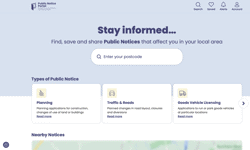At Outbrain, we spend our time trying to understand what makes content interesting, to whom, and in what context. As part of our ongoing research, we released our first quarterly study highlighting trends in content discovery: how are people finding content online? And how engaged are readers in the content once they arrive?
First, a brief bit of background on our methodology. Our content discovery platform is installed on the article pages of tens of thousands of sites. From this vantage point, we have a view both into the traffic referrers that bring users to a site, as well as how many articles the user reads after arriving. For our study, we limited our research to known, branded publisher sites (over 100 of them) and analysed more than 100 million user sessions over the course of Q1.
How are people finding content online?
About 2/3rds of clicks into publisher articles come from direct navigation, that is, through a link on the home page, a bookmark, etc. However, of the remaining 33% of traffic:
• 41% comes from a search query
• 31% comes from a link on another publisher website or blog
• 17% comes from large portal site like Yahoo, AOL, MSN, etc.
• 11% comes from social (Facebook, Twitter, Digg, etc.)
While it is no surprise that search is a major channel for content discovery, we were impressed at how much traffic comes from cross-publisher linking. 48%, or almost half, of external visitors reach articles from an editorially selected link on another content site (whether a portal or smaller publisher), making it collectively a larger channel than search. This finding makes intuitive sense: people are likely to click on a content link when they are on a site devoted to content, even if that link takes them to a different site. They are already in content consumption mode.
Social media made up the smallest slice of external traffic at 11%, which confounded many of us living in our digital bubbles, until we realised that perhaps… we live in a digital bubble. After all, reports suggest that a low percentage of Twitter users may be actively using the service, and that only 12% of Facebook posts link to content (versus 41% of blog posts). But to be fair, social has existed as a channel for under five years and continues to grow. In future quarterly reports we plan to track whether it gains market share as a vehicle for content discovery.
What are the top referring sites?
Digging a bit more granularly into which sites are driving the most user sessions directly into a piece of content on another site, our data shows the following ranking:
1. Google
2. AOL
3. Yahoo
4. Facebook
5. Drudge Report
6. Bing
7. MSN
8. Twitter
9. Outbrain
10. FoxNews.com
11. StumbleUpon
12. Fark.com
13. The Huffington Post
14. MediaTakeOut
15. Reddit
16. PopEater
17. CNN
18. RealClearPolitics
19. The Washington Post
20. Digg
As one might expect, Google is a runaway leader here, generating about three times as much traffic to content than its nearest rival AOL (and you may recall, AOL search is also powered by Google). In general, there is a good mix of content sites, search engines, portals and social networks in the top 20.
Do Engagement levels differ per channel?
In addition to analysing where people are discovering content, we wanted to see whether post click behaviour differed depending on where the content was found. One way we measured content engagement was by looking at bounce rates coming from each channel. We consider a “bounce” any user session resulting in only one page view on the publisher site.
People accessing content from another content site have the lowest bounce rate. We assume this is because they are continuing their original activity of browsing content. Social has the highest bounce rate. The “why” behind this is hard to glean from the data itself, but it may indicate that people are reading content shared by their friends / followers to supplement what they know about their social connections, rather than as a launch pad for fully exploring a publication. Additionally, we theorize that someone clicking on an article link on Twitter may still fundamentally be in the mode of checking Twitter updates and, as such, will return to Twitter quickly to see what articles other people are tweeting. Their editorial loyalty is to their network, not to the publisher site they have landed on.
On the flip side of the spectrum, we looked at which channels produce hyper-engaged readers, meaning readers who consume at least five pages of content once they arrive on a publisher site.
Perhaps as expected, this revealed almost a reversal of the chart on bounce rates - traffic from other content sites brings the highest proportion of hyper-engaged readers, while traffic from portals (links off a home page like Yahoo.com, AOL.com, MSN.com, etc.) and social bring in the least. Within the category of search, one interesting nugget was that people accessing content from a Yahoo search were twice as likely to be hyper-engaged than the overall average. Again, this report can’t always get at the “why”, but we think that Yahoo’s search traffic may lead to higher content engagement than other search engines because it is well-integrated into Yahoo content sites, whereas Google’s search engine stands starkly alone, generally outside a content experience.
The report we introduced last month on patterns of content discovery is, we hope, the first of many. We plan to rerun similar analysis each quarter to begin building a picture of how trends in content discovery are changing and to help publishers understand the dynamics behind how people are sourcing their content.










